Gaotai Mountain (高台山) and the three Daotian Peaks (小中大島田山回來) afford visitors a truly rewarding hike in Hsinchu County (新竹).
Located in the foothills just beyond the charming Neiwan Old Street (內灣老街), the hike is well suited for hikers in a fair to good physical condition. It’s also a good introduction to the foothills of northwest Taiwan, along with some more adventurous — but still not terribly dangerous — rope and scrambling sections. As a bonus, there are Japanese ruins, hot springs and river tracing destinations such as Meihua Waterfall (梅花瀑布) and Bilin Waterfall (比麟瀑布) all located nearby.
WHISPERING PINES
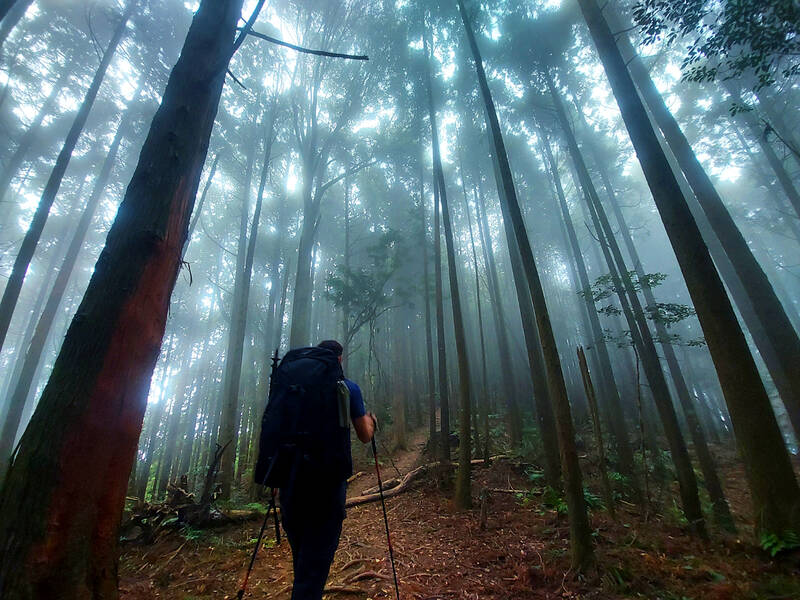
Photo: David Cotter II
The first section of the Gaotai Mountain hike is a beautiful, mostly uphill walk through pine forests that lead up to the peak. For those in good physical condition, this should not be difficult, but it will definitely get your blood flowing.
There is a triangulation point marker (三角點) on the peak of Gaotai Mountain, but don’t stop there for too long. Your real destination should be the campsite located just beyond. You can stay overnight if you want (just remember to bring water with you). Note that there may be crowds on weekends or holidays.
THREE PEAKS
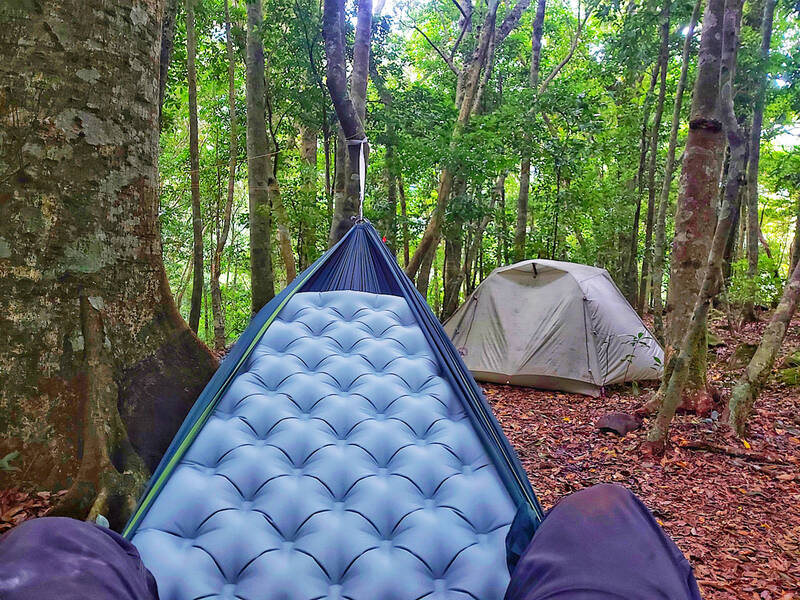
Photo: David Cotter II
Near the campsite, there are the ruins of an old Japanese building — a military police occupation center constructed specifically to keep indigenous communities under control. Not only that, but the trail itself was originally a Japanese road, and you can still see remnants of it at various points along the hike.
Beyond the ruins you’ll find this section of the hike is more demanding. Just follow the trail and you will soon reach the so-called “Small,” “Middle” and “Big” Daotian Peaks.
Notwithstanding the name, at only 1824 meters, Big Daotian is a relatively low peak although it is home to a gigantic tree that you can climb and get some great pictures from.
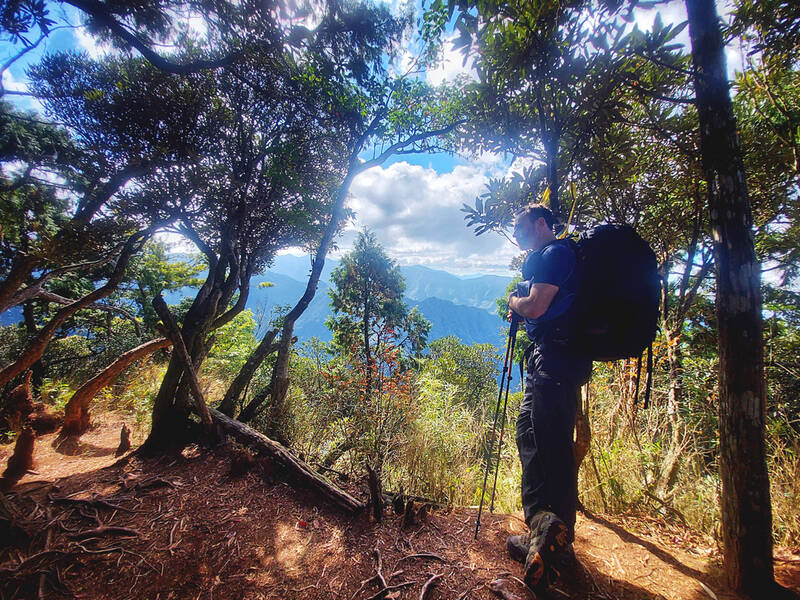
Photo: David Cotter II
Like many hills of its kind, Big Daotian Peak only has a small clearing and little to no view at the top. But the trees coating the slopes are amazing, with gnarly, moss covered roots rising up to a lush canopy.
Follow the path to the right indicated by the flags and you will arrive at a three way intersection in a clearing.
To return to the trailhead, turn right and head downhill. This will take you back to the campsite, Gaotai Mountain and the exit.
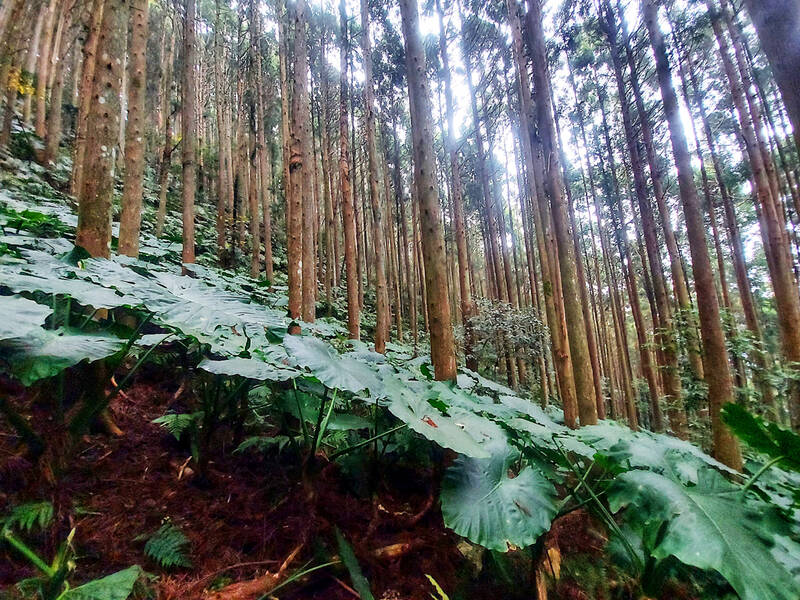
Photo: David Cotter II
The trail off to the left heads towards Shihmada Mountain (石麻達山) and marks the beginning of a network of trails that snake their way throughout a series of much more remote and challenging mountains.
RELICS AND RUINS
The Shimada Mountain trail passes by many more overgrown Japanese Colonial-era ruins. These include obvious foundations of walls and doors, a prominent, round stone structure that was once the base of a cannonade, ominously overlooking the local indigenous villages in the valleys below. You’ll also find the clearest remnants of the old Imperial road.
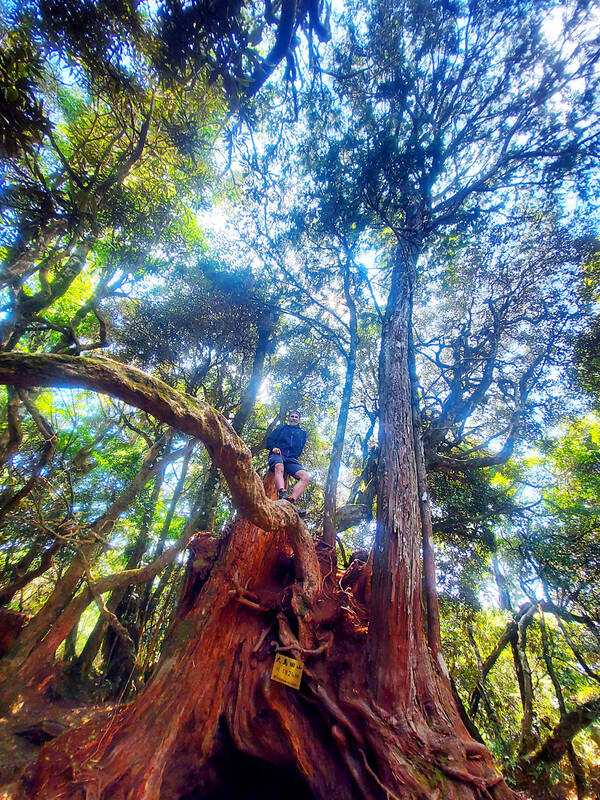
Photo: David Cotter II
This trail is much more demanding, overgrown and difficult to follow. It is only sparsely marked and has no water sources. For experienced hikers looking for an interesting challenge, this may be worth your while; otherwise, just take a quick look and then head back to the trailhead.
The route back to Gaotai Mountain circumvents the Daotian peaks, following the abandoned Japanese Imperial era road instead. Some sections are in excellent condition, and you can get a sense of what the entire road would have looked like in its heyday, while other sections have collapsed over time, crumbling into the misty jungle like the remnants of some lost civilization. While these are easily passable, they add a lot of ambiance and definitely make the hike a lot more fun.
Eventually, you’ll get back to the campsite, from where it is easy to find your way back downhill. However, while you leave the mountain behind, you might find you left a piece of your heart amid Hsinchu’s green and pleasant hills.
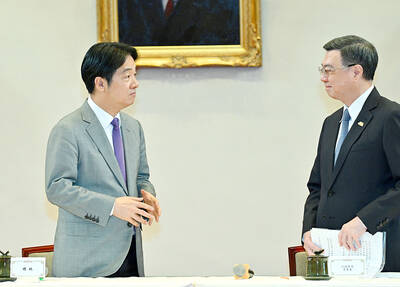
Under pressure, President William Lai (賴清德) has enacted his first cabinet reshuffle. Whether it will be enough to staunch the bleeding remains to be seen. Cabinet members in the Executive Yuan almost always end up as sacrificial lambs, especially those appointed early in a president’s term. When presidents are under pressure, the cabinet is reshuffled. This is not unique to any party or president; this is the custom. This is the case in many democracies, especially parliamentary ones. In Taiwan, constitutionally the president presides over the heads of the five branches of government, each of which is confusingly translated as “president”

Sept. 1 to Sept. 7 In 1899, Kozaburo Hirai became the first documented Japanese to wed a Taiwanese under colonial rule. The soldier was partly motivated by the government’s policy of assimilating the Taiwanese population through intermarriage. While his friends and family disapproved and even mocked him, the marriage endured. By 1930, when his story appeared in Tales of Virtuous Deeds in Taiwan, Hirai had settled in his wife’s rural Changhua hometown, farming the land and integrating into local society. Similarly, Aiko Fujii, who married into the prominent Wufeng Lin Family (霧峰林家) in 1927, quickly learned Hoklo (commonly known as Taiwanese) and

The Venice Film Festival kicked off with the world premiere of Paolo Sorrentino’s La Grazia Wednesday night on the Lido. The opening ceremony of the festival also saw Francis Ford Coppola presenting filmmaker Werner Herzog with a lifetime achievement prize. The 82nd edition of the glamorous international film festival is playing host to many Hollywood stars, including George Clooney, Julia Roberts and Dwayne Johnson, and famed auteurs, from Guillermo del Toro to Kathryn Bigelow, who all have films debuting over the next 10 days. The conflict in Gaza has also already been an everpresent topic both outside the festival’s walls, where

The low voter turnout for the referendum on Aug. 23 shows that many Taiwanese are apathetic about nuclear energy, but there are long-term energy stakes involved that the public needs to grasp Taiwan faces an energy trilemma: soaring AI-driven demand, pressure to cut carbon and reliance on fragile fuel imports. But the nuclear referendum on Aug. 23 showed how little this registered with voters, many of whom neither see the long game nor grasp the stakes. Volunteer referendum worker Vivian Chen (陳薇安) put it bluntly: “I’ve seen many people asking what they’re voting for when they arrive to vote. They cast their vote without even doing any research.” Imagine Taiwanese voters invited to a poker table. The bet looked simple — yes or no — yet most never showed. More than two-thirds of those